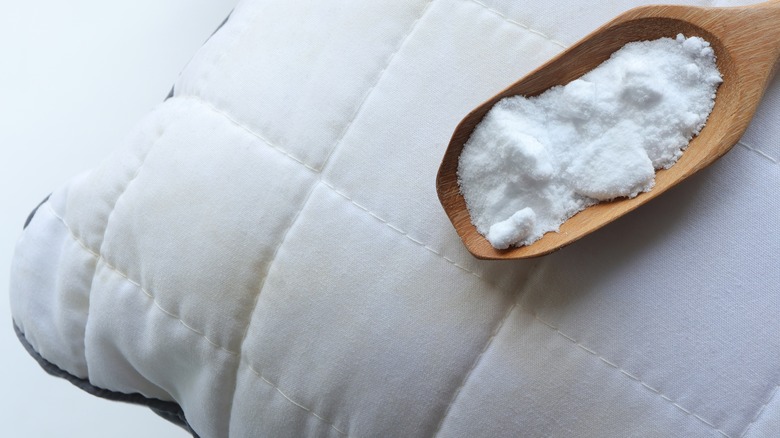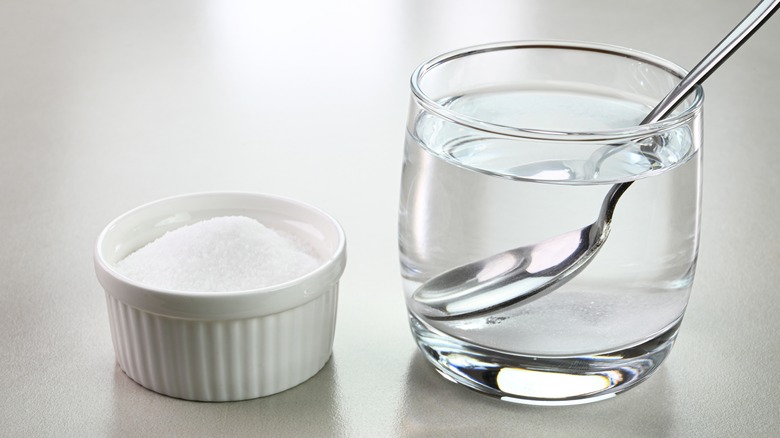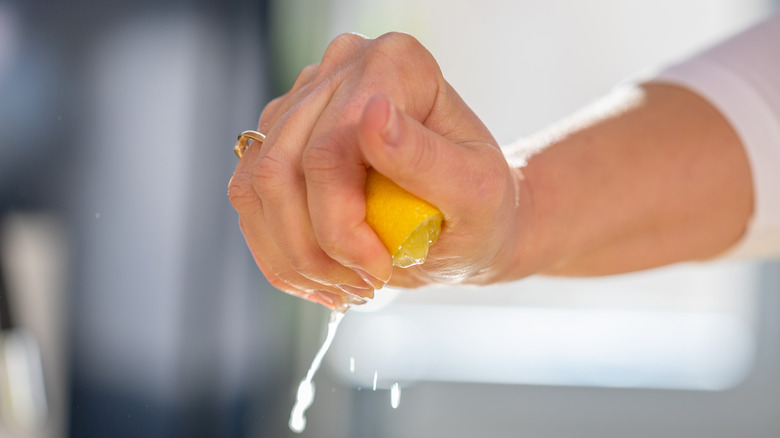Is Salt Really The Key To Removing Yellow Stains From Pillows?
The average pillow takes a lot of abuse on a daily basis, so it's not surprising when unsightly yellow stains start to develop. These stains are typically caused by sweat, the same substance that makes the armpit portion of so many white tees and tanks turn yellow. However, saliva and body oils likely contribute to the problem, as well. Fortunately, salt has been shown to counteract the urea-turned-ammonia that is inherent in sweat, making it an effective ingredient in the stain-removal process.
A lot of pillows can be machine-washed (check tags to be sure) and honestly should be cleaned regularly to get rid of the proliferation of bacteria, dust mites, and other nasty stuff that builds up over time. But, as anyone who's ever tackled stubborn household stains knows, it's best to handle the problem before putting it in the dryer because the heat will only serve to set the stain, making it much more difficult to remove. So, if making your pillows look their very best is your end goal, first gather up some salt and use a bit of elbow grease to get the job done before tossing yellow-stained pillows in the laundry.
How to use salt and water to remove yellow stains
There are a lot of natural stain-removal methods out there, but few are quite as legit as this one involving only salt and water. Although salt and water have not been definitively proven through scientific studies to remove yellow pillow stains, it is believed to be one of the best and most effective options for dealing with lasting sweat residue. Plus, it's pretty hard to argue with how easy and cheap it is.
To get rid of ugly yellow pillow stains, fill up a container with one quart of hot water. Then, add four tablespoons of regular old table salt to the water and stir until it's dissolved. Next, locate a clean washcloth or sponge, then dip it into the mixture, and dab the affected area as much as needed until the stain disappears. Take care not to rub it too hard, however, as salt is pretty abrasive and may damage the pillow's fabric. Rinse the area with cool water and either let it air dry or pop it in the dryer if the pillow directions allow for it. Ideally, the yellow stains will be totally gone, but if not, you can repeat the steps as needed.
Add lemon juice for extra stain-removing power
If water and salt aren't cutting it, consider adding one more ingredient into the mix — lemon juice. The citric acid-rich substance is adept at both dislodging stubborn stains and also serving as a natural bleach. To do this, gather up a lemon, some table salt, water, and a clean, soft-bristled toothbrush. Then, apply either fresh-squeezed or bottled lemon juice to the stain in question, followed up with a coating of table salt. Use the toothbrush to gently rub the stain. Next, set the pillow near a window to dry in the sun for a while. Lastly, using cold water, rinse the stain thoroughly. If the yellowing isn't a thing of the past, you can repeat the process until it is.
If you don't want to do this too often, it's probably a good idea to invest in a pillow protector — which will keep the sweat from staining the pillow in the first place. Or, steer clear of fabrics that are more sweat-inducing, like flannel. Silk and satin are also better at repelling liquids than cotton pillowcases, which means less sweat will make it through to the other side.


